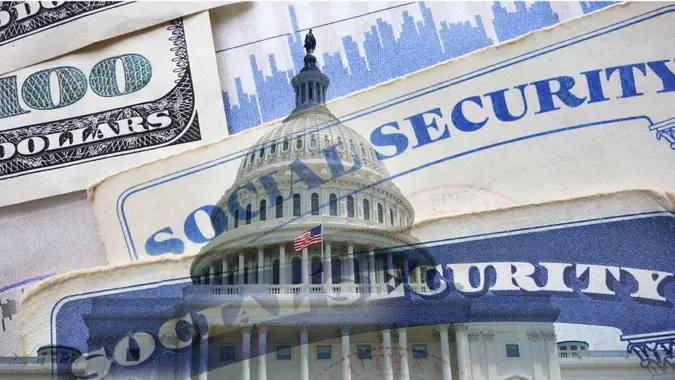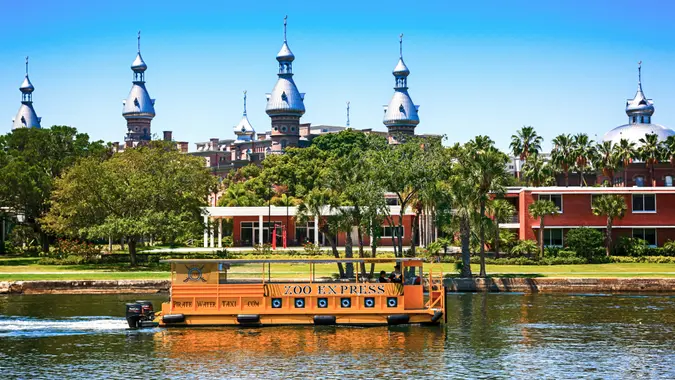4 Hidden Expenses That Sneak Up on Retirees After Age 75

Commitment to Our Readers
GOBankingRates' editorial team is committed to bringing you unbiased reviews and information. We use data-driven methodologies to evaluate financial products and services - our reviews and ratings are not influenced by advertisers. You can read more about our editorial guidelines and our products and services review methodology.

20 Years
Helping You Live Richer

Reviewed
by Experts

Trusted by
Millions of Readers
Many people expect their expenses to shrink in retirement, but for many Americans, the opposite happens after 75. Costs rise in ways after a decade into retirement.
Fidelity now estimates a 65-year-old retiring in 2025 will need about $172,500 to cover healthcare costs throughout retirement, and that figure doesn’t include long-term care. Add in taxes, home modifications, and everyday bills, and retirement can feel more expensive than ever.
Here are the hidden costs most likely to surprise retirees, and how to plan ahead.
Healthcare and Long-Term Care Costs
Healthcare is a common expense that’s difficult for retirees to estimate. Medicare covers hospital stays and doctor visits, but not extended care such as nursing homes, assisted living, or in-home aides.
Jay Zigmont, certified financial planner and founder of Child Free Trust, said, “The average annual cost of a single room in a skilled nursing facility is $125,000. Men will spend an average of 2.2 years in care, and women 3.7 years. The cost of long-term care is going up by 5% each year, so you need to be prepared.”
Takeaway: Treat long-term care as a near certainty. Planning early helps protect your savings and peace of mind.
Home Modifications and Support Services
Even avoiding a nursing home isn’t cheap, as mobility changes often include adding ramps, stair lifts, or walk-in showers, while in-home help brings ongoing bills.
Jeremy Gurewitz, co-founder of Solace Health, said, “Even a part-time home health aide can tally more than $60,000 a year, and full nursing home care is significantly more costly. Other hidden costs also involve home modifications like stair lifts or a walk-in shower, which often can run tens of thousands of dollars, but are necessary for safety and independence.”
An AARP Home and Community Preferences Survey found that 75% of adults over 50 years old want to age in place, but many underestimate what it costs to do so safely. Seventy-one percent stated they’ll likely install ramps or chairlifts for easier access around their homes.
Takeaway: If you want to stay at home, budget for both renovations and the support services that make it possible.
Taxes and Medicare Surcharges
Once retirees reach age 73, the IRS requires them to start taking money out of tax-deferred accounts like traditional IRAs and 401(k)s. These withdrawals, called Required Minimum Distributions (RMDs), raise taxable income. If income climbs high enough, it can also trigger Medicare’s Income-Related Monthly Adjustment Amount (IRMAA), which increases monthly premiums.
Financial planner Aaron Brask said, “I occasionally get calls from people asking why their Social Security checks are smaller. Most of the time, it’s because Medicare premiums went up after they crossed an IRMAA income threshold.”
Takeaway: Smart tax planning, like Roth conversions or carefully timed withdrawals, can reduce future surcharges.
Other Surprising Costs
Not every hidden expense comes from healthcare or taxes. Even routine bills can creep upward in later years.
Prateek Agarwal, co-founder of Best Online Traffic School, said, “Car insurance rates are a big expense that can catch aging drivers off-guard. While rates tend to decrease as people age, they start increasing again after age 60. So, while a 60-year-old might pay some of the lowest rates of their driving life, that rate will increase 10%-20% over the senior years.”
Inflation is another hidden expense. It doesn’t just hit groceries or gas. It pushes up the cost of insurance premiums, medical supplies, and other essentials. Since 2000, healthcare prices have climbed about 40.3% faster than overall consumer prices, according to a KFF analysis of data from the Bureau of Labor Statistics.
For retirees on fixed incomes, even modest annual increases compound into a meaningful strain.
Takeaway: Everyday costs don’t always stay flat in retirement. Factor in the steady creep of inflation and look for ways, like insurance discounts to soften the impact.
Conclusion
Retirement doesn’t just mean living on less; it often means spending more, especially after 75. From long-term care to home renovations, rising taxes, and insurance premiums, these late-life costs can take retirees by surprise.
By anticipating them now and planning accordingly, you can keep control of your retirement and spend your later years focused on living, not worrying.
More From GOBankingRates
 Written by
Written by  Edited by
Edited by 

























